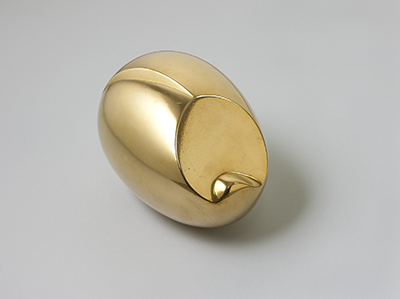Newborn created by Constantine Brancusi (1876 to 1957), from marble, 1915 is currently on display at the Museum of Art in Philadelphia.
Brancusi's long series of statues on the subject of the child's head began with realistic representations such as the head of a sleeping child (private group) and became more understandable with Prometheus. With the head of a child made from wood (National Museum of Modern Art, Georges Pompidou Centre), it became the piece, and all hints of the hair above or the neck below were removed. The curved central upper part of the newborn accentuates the baby's wooden head, but the mouth is radically designed: the egg is cut sharply to a flat and oval level. There is only a small marble curl at the bottom that points to the chin. The large opening indicates that the child's open mouth is emitting loudly, which gives emotional ingenuity to the elegant form.
When evoking an egg or cell, the newborn is a metaphor for childbirth, as well as an image of the baby's head. The subject also indicates the quality of newborns in Brancusi's art and this predominantly bold statue. The sculptor's fixation with the moment of origin exposes his aspirations for authenticity, and perhaps the remarkable claim he deserves among the modern avant-garde. The serial forms that portray Brancusi's work demonstrate his originality by showing this: the apparent repetition of his sculptures only appears more convincingly in the individual dissimilarity of each.
Constantine Brancusi is considered the most important sculptor of the 20th century. His insightful sculptures are often a perfect example of his subject. It has laconic titles like Princess X, Fish, and Bird in Space, and the statues are deceptively simple, with small forms designed to reveal hidden facts. Unlike the majestic form of Auguste Rodin, which Brancusi briefly attended at the beginning of his career, Brancusi worked directly with his leading materials and technology in the field of direct sculpture, instead of working with intermediaries like clay or plaster models.
Brancusi struggled to create statues that conveyed the factual essence of his themes, be they people, animals, or objects, focusing on very simplified forms without decorations. While many considered his abstract art, the artist did not agree. He insisted on the representative nature of his works, explaining that they had revealed a fundamental fact, which was often hidden. Brancusi's work was largely supported by "primitive", myths, cultures and folklore. The materials Constantine used, especially stone, marble, wood, bronze, and metal, painted specific shapes that he produced. He followed his methods closely, polishing the pieces meticulously for several days to achieve a glow that indicates infinite permanence in the surrounding space.




